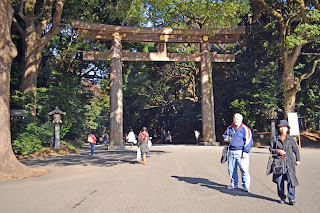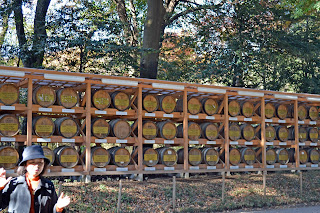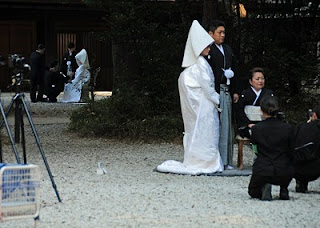I have grand plans to write up our trip to Japan day by day. We covered a lot of territory, so to speak, in the ten days we spent there. I have many pictures of pretty settings and delicious foods. I promise that I will do some blogging about those aspects of the trip. However, today I want to feed my lifelong obsession with bathrooms and comment on those I found in Japan.
My family teased me as a child that I could not go anywhere without checking out the bathroom. I am not sure why bathrooms fascinate me so much but I have touched on the topic at least twice before in this blog. And Japan proved to be a bath lovers delight when you found a "western style" toilet. (
Japanese style toilets are in the ground and require squatting which some of us with injured muscles can not currently do too well.)
 |
| Toto toilet |
First, western style toilets in Japan, sometimes even in public settings, have heated seats and water sprays to assist you in your hygiene. Some people like me love it. Others, like my husband, felt offended by the heat on the tush and would not even consider the water options. I had been exposed to the Japanese Western style toilet before, through a former colleague who had a
small side business in those types of toilets, but could not convince my husband to allow me to replace his home throne with one with heat and sprays. Perhaps in the future if we ever remodel the master bath I can get a
Toto toilet like this one from the
Hotel Granvia Kyoto.
 |
| Flushing sound effect sensor |
Second, as one of my Japanese friends explained, people in Japan are not comfortable with the sounds of their body functions on the toilet. In the past, like certain women in the US, Japanese women would flush the toilets many times to block any sound. The Japanese decided that such flushing was wasteful and instead put in a toilet flushing sound effect in restrooms. Some of these flushing sound effects are triggered automatically by motion (particularly hand motion like those on some of the towel dispensers) and can be quite irritating to those of us who are less shy and do not want to hear the constant roar of a flushing toilet in the commode. Here is a picture of one of those sensors in a public toilet in Kyoto.
Third, certain women's stalls in public restrooms have little seats for infants while mom is otherwise indisposed. The great thing about these infant seats are the picture instructions that mom not leave the baby unattended to put on makeup or smoke (see picture below). Not having a baby in tow these days, I found the seat useful for holding my camera case.
 |
| Infant seat in Japanese public bathroom |
 |
| Slippers for WC in Nishi Hongwanji |
Fourth, the Japanese have special slippers for the bathrooms to make sure that what happens in the bathroom stays in the bathroom. Apparently this practice is common in ryokan,
minshuku and private homes (none of which did we visit). I found these slippers in one of the Kyoto temple's bathrooms.
 |
| Sink shows you where to dry hands |
Fifth, for reasons I do not understand, there are rarely paper towels or hand dryers in public bathrooms. Most women carry little cloth towels in their purses when they are out and about. This lack of towels seems to me to be similar to the fact that Japanese do not typically use napkins at the table but do have wet towels provided when you first sit down in a restaurant and sometimes again after a course or two. I learned to use the wet towel as a napkin although I observed that the Japanese around me seemed able to eat without wiping their mouths incessantly like I did after every few bites. But I digress. The real issue is drying your hands in the bathroom. And I found my favorite sink of all time in Japan with a built in hand dryer in the front opposite the electronic faucets. Such an elegant design.
 Sixth, (and finally for now), I fell in love with the shower at the Hotel Granvia Kyoto. It was a wonder of economic design. It had the shower from above, a movable handheld shower, and shower sprays at mid body to work on those parts of your back that frequently ache. I have seen showers in a local spa that sprayed from the top and the sides, but those showers were big and clunky. The shower in the Granvia was slim and well designed for someone my size as well as someone my husband's size. Again, if I ever remodel the master bathroom, I will make every effort to get this shower assembly. Then I can relive every day my wonderful Japan bath experience.
Sixth, (and finally for now), I fell in love with the shower at the Hotel Granvia Kyoto. It was a wonder of economic design. It had the shower from above, a movable handheld shower, and shower sprays at mid body to work on those parts of your back that frequently ache. I have seen showers in a local spa that sprayed from the top and the sides, but those showers were big and clunky. The shower in the Granvia was slim and well designed for someone my size as well as someone my husband's size. Again, if I ever remodel the master bathroom, I will make every effort to get this shower assembly. Then I can relive every day my wonderful Japan bath experience.











